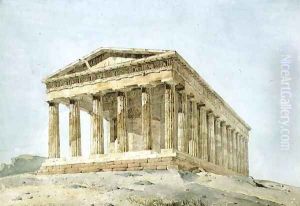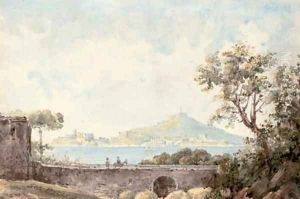George Ledwell Taylor Paintings
George Ledwell Taylor was an influential English architect, artist, and writer, whose contributions to the field of architecture and historical research are noteworthy. Born in 1788, Taylor's early life set the stage for a career that would span several decades, during which he would leave an indelible mark on the architectural landscape of his time. His work, characterized by a keen interest in classical architecture, was influential in the revival of Greek and Roman architectural styles in the 19th century, a movement that sought to bring the aesthetics and principles of ancient architecture into contemporary practice.
Taylor's education and travels played a significant role in shaping his architectural philosophy. He was known to have traveled extensively in Europe, studying ancient ruins and architectural works firsthand, which deeply influenced his design perspective. This hands-on approach to learning allowed Taylor to develop a profound understanding of classical architecture, which he would later apply to his projects and writings. His travels were not only a source of inspiration but also provided him with the opportunity to sketch and document ancient architectural designs, contributing significantly to the historical understanding of these structures.
Throughout his career, George Ledwell Taylor was involved in a wide range of projects, including residential, institutional, and commercial buildings. However, it was perhaps his role as an educator and author that had the most lasting impact. Taylor was passionate about sharing his knowledge and insights on architecture, which he did through numerous publications and as a lecturer. His writings not only covered architectural design principles but also delved into the historical aspects of architecture, aiming to educate a wider audience about the importance and beauty of classical architectural styles.
Taylor's legacy is also marked by his involvement in architectural societies and his efforts to promote architectural education. He was a member of various architectural institutions, where he actively participated in discussions and initiatives aimed at advancing the field of architecture. Through his advocacy for architectural education, Taylor played a pivotal role in inspiring future generations of architects and historians.
George Ledwell Taylor passed away in 1873, leaving behind a rich legacy that continues to influence the fields of architecture and historical research. His dedication to the study and revival of classical architecture, combined with his contributions as an author and educator, have ensured that his work remains relevant and respected. Taylor's life and career exemplify the impact that a deep passion for history and architecture can have on both the built environment and the understanding of architectural heritage.

